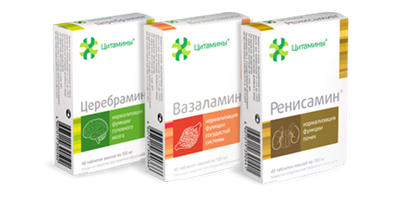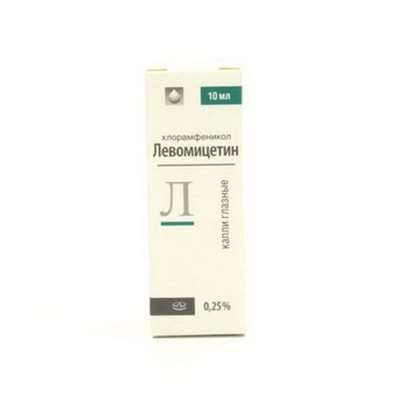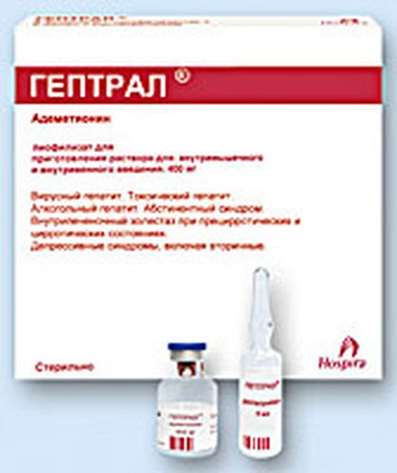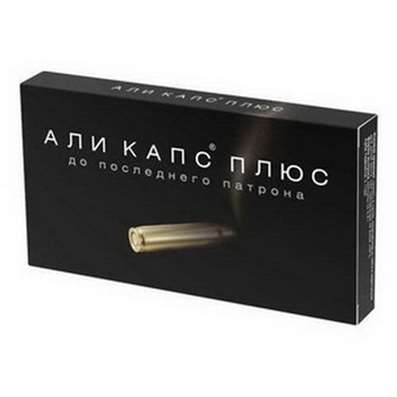Instruction for use: Lucrin Depot
I want this, give me price
ATX Code L02AE02 Leiprorelin
Active substance: Leiprorelin
Pharmacological group
Hormones of the hypothalamus, pituitary gland, gonadotropins and their antagonists
An antineoplastic agent, a gonadotropin-releasing hormone analog [Antitumor hormonal agents and hormone antagonists]
Nosological classification (ICD-10)
C50 Malignant neoplasm of breast
Cancer of the nipple and areola of the breast, Breast carcinoma, The hormone-dependent form of recurrent breast cancer in women in menopause, Hormone-dependent breast cancer, Disseminated breast carcinoma, Disseminated Breast Cancer, Malignant breast cancer, Malignant neoplasm of breast, Contralateral breast cancer, Locally advanced or metastatic breast cancer,Locally-distributed breast cancer, Locally-recurring breast cancer, Metastatic breast carcinoma, Metastasis of breast tumors, Metastatic breast carcinoma, Inoperable breast carcinoma, Incompatible breast cancer, Breast cancer in women with metastases, Breast cancer in men with metastases, Breast Cancer, Breast cancer in men, Mammary cancer, Breast cancer with distant metastases, Breast cancer in postmenopausal women, Breast cancer hormone-dependent, Breast cancer with local metastases, Breast cancer with metastases, Breast cancer with regional metastases,Breast cancer with metastases, Common hormone-dependent forms of breast cancer, Common Breast Cancer, Recurrent Breast Cancer, Recurrence of breast tumors, Breast cancer, Estrogen-dependent breast cancer, Estrogen-Dependent Breast Cancer, Disseminated breast cancer with overexpression of HER2, Tumors of the mammary glands
C61 Malignant neoplasm of prostate
Adenocarcinoma of the prostate, Hormone-dependent prostate cancer, Hormone-Resistant Prostate Cancer, Malignant tumor of prostate, Malignant neoplasm of prostate, Carcinoma of the prostate, Locally-distributed non-metastatic prostate cancer, Locally advanced prostate cancer, Locally spread prostate cancer, Metastatic prostatic carcinoma, Metastatic prostate cancer, Metastatic hormone-resistant prostate cancer, Non-metastatic prostate cancer, Incompatible prostate cancer, Prostate Cancer, Prostate cancer, Common prostate cancer, Testosterone-Depot Prostate Cancer
D26 Other benign neoplasms of the uterus
Fibromyoma of the uterus, Myoma, Uterine fibroids, Fibromyoma, Myoma of the uterus, Fibrrios, Meigs syndrome, Tumors of the uterus
E30.1 Premature puberty
Premature puberty, Premature sexual development, Premature puberty in girls, Early puberty, Primary premature puberty
N80 Endometriosis
Endometrioid endometriosis
Composition
Lyophilizate for the preparation of a suspension for intramuscular and subcutaneous administration of prolonged action 1 fl.
active substance:
Leuprorelin acetate 3.75 mg
Auxiliary substances: gelatin - 0,65 mg; Lactic and glycolic acid copolymer - 33.1 mg; Mannitol 6.6 mg
Solvent (in ampoule): carmellose sodium - 10 mg; Mannitol - 100 mg; Polysorbate 80 - 2 mg; Water for injection - up to 2 ml
In vials of transparent glass with a volume of 9 ml to 44.1 mg of lyophilizate (complete with a solvent - 2 ml ampoule, two blister packs with sterile needles, one disposable syringe, a napkin soaked with 70% isopropyl alcohol); In a pack of cardboard 1 set.
Lyophilizate for suspension preparation for intramuscular and subcutaneous administration of prolonged action 1 two-chamber syringe
active substance:
Leuprorelin acetate 3.75 mg
Auxiliary substances: gelatin - 0,65 mg; Lactic and glycolic acid copolymer - 33.1 mg; Mannitol 6.6 mg
Solvent (in the chamber of a two-chamber syringe): carmellose sodium - 5 mg; Mannitol - 50 mg; Polysorbate 80 - 1 mg; Water for injection - up to 1 ml
In two-chamber syringes, 44.1 mg of lyophilizate (in the chamber closest to the needle) and 1 ml of solvent for the preparation of a suspension (in the chamber nearest to the piston) (complete with a plastic piston, one or two napkins impregnated with 70% isopropyl alcohol); In a pack of cardboard 1 set.
Description of dosage form
Lyophilizate: white powder.
Solvent: colorless clear solution.
Finished suspension: white suspension. Upon settling, a white precipitate forms, which is easily resuspended by shaking.
pharmachologic effect
Pharmacological action - antitumor, inhibiting the secretion of gonadotropins.
Pharmacodynamics
Leuprorelin, a GnRH agonist, is an effective inhibitor of gonadotropin secretion with long-term admission in therapeutic doses. In humans, the appointment of leuprorelin leads to an initial increase in the concentrations of LH and FSH, which leads to a transient increase in the concentrations of sex hormones (testosterone and dihydrotestosterone - in men, estrone and estradiol - in women). However, long-term administration of leuprorelin leads to a decrease in the concentrations of LH, FSH and sex hormones. In men, the concentration of testosterone decreases to the postastratic or prepubertal level. In women who are in a state before menopause, the concentration of estrogen falls to the postmenopausal level. These hormonal changes occur within a month from the beginning of therapy with the drug in the recommended doses.
Suppression of steroidogenesis in the ovaries and testes is a reversible process and terminates after the end of therapy.
Pharmacokinetics
Bioavailability of the drug for p / k and / m introduction is comparable. The approximate value of absolute bioavailability when the drug is administered at a dose of 7.5 mg is 90%.
After a single intravenous injection of leuprorelin in patients with prostate cancer at doses of 3.75 and 7.5 mg, the average plasma concentrations of the drug at the end of the first month were 0.7 and 1 ng / ml, respectively.
The serum concentration of leuprorelin 3.75 mg was determined within 12 months. In 11 patients with premenopausal breast cancer. The average concentration of leuprorelin exceeded 0.1 ng / ml after 4 weeks and remained stable after repeated administration (at the 8th and 12th weeks). No cumulation of the drug was noted.
The average Vss is 27 liters. Binding to plasma proteins - 43-49%. The system clearance is 7.6 l / h. T1 / 2 - about 3 hours. Leiprorelin, being a peptide, undergoes metabolic degradation, mainly peptidase, to shorter inactive peptides - pentapeptide (metabolite I), tripeptides (metabolites II and III) and dipeptide (metabolite IV). The time to reach Cmax of the main metabolite M-I is 2-6 h and corresponds to 6% of Cmax leuprorelin. After 1 week after injection, the average concentration of M-I in the plasma is 20% of the average concentration of leuprorelin.
After the administration of 3.75 mg of leuprorelin, the leuprorelin and M-I content in urine was less than 5% of the administered dose 27 days after the drug was administered.
Special Groups
Pharmacokinetics of the drug in patients with impaired liver or kidney function has not been investigated.
indications
Progressive prostate cancer (palliative treatment), incl. When orchiectomy or treatment with estrogens are not shown or are not applicable in this patient;
Endometriosis (for up to 6 months as the main therapy or addition to surgical treatment);
Fibromyoma of the uterus (for up to 6 months as a preoperative preparation for the removal of fibroids or hysterectomy, as well as for symptomatic treatment and improvement in women in the period of menopause who refuse surgical intervention);
Breast cancer in the perimenopausal period in combination with hormone therapy;
Children with premature puberty (PPS) of the central genesis.
Contraindications
Hypersensitivity to leuprorelin, similar to preparations of protein origin or to any other auxiliary substance included in the composition of the dosage form;
Surgical castration;
pregnancy;
The period of breastfeeding;
Vaginal bleeding of unknown etiology;
Prostate cancer (hormone independent);
Children's age (under 18 years), except for children with PPP of the central genesis.
Women over 65 years.
With caution: patients with metastases in the spine, obstruction of the urinary tract or hematuria.
pregnancy and lactation
The drug is contraindicated in pregnancy and lactation, so before starting the use of the drug is recommended to exclude the presence of pregnancy.
Side effects
On the part of the CCC: swelling, angina, palpitations, bradycardia, tachycardia, arrhythmia, congestive heart failure, ECG changes, increased or decreased blood pressure, myocardial infarction, phlebitis, pulmonary embolism, stroke, thrombosis, transient ischemic attacks, varicose veins.
From the digestive system: change (increase, decrease or absence) of appetite, changes in taste, dry mouth, thirst, dysphagia, nausea, vomiting, diarrhea or constipation, flatulence, increased or decreased body weight, abnormal liver function, abnormality Results of functional liver tests, jaundice.
On the part of the endocrine system: pain and sensitivity of the mammary glands, gynecomastia, lactation, enlargement of the thyroid gland, impotence, decreased libido, diabetes mellitus, androgen-like effects - virilization, acne, seborrhea, hirsutism, voice change.
On the part of blood and hemopoiesis: anemia, thrombocytopenia, leukopenia, leukocytosis, neutropenia, increased PV and partial thromboplastin time.
From the musculoskeletal system: bone pain, joint disorders, retroperitoneal fibrosis, arthralgia, myalgia, muscle tone increase; Decreased bone density.
From the central and peripheral nervous system: headache, dizziness, fainting, sleep disturbance (insomnia), increased irritability, anxiety, apoplexy of the pituitary gland (in patients with pituitary adenoma), depression, paresthesia, memory impairment, hallucinations, hyperesthesia, hypoesthesia, emotional Lability, personality disorders, violation of neuromuscular transmission, peripheral neuropathy, drowsiness. Very rarely there were cases of suicidal thoughts in patients and suicidal attempts.
On the part of the respiratory system: cough, shortness of breath, nasal bleeding, hemoptysis, pharyngitis, pleural effusion, fibrous formations in the lungs, lung infiltrates, respiratory distress.
From the skin and its appendages: dermatitis, dry skin, photosensitivity reactions, skin itch, rash, erythema, urticaria, ecchymosis (skin hemorrhages), alopecia, pigmentation, striae, in women - acne, hair formation change (hair growth / loss ).
From the sense organs: a violation of sight and hearing, ringing in the ears, dry eyes, amblyopia.
On the part of the genitourinary system: dysuria, dysmenorrhea, breakthrough and prolonged vaginal bleeding, dry vaginal mucosa, vaginitis, vaginal odor, leucorrhoea, prostate gland, testicular atrophy, testicular pain, hematuria, swelling of the penis.
Changes in laboratory parameters: an increase in blood urea nitrogen, an increased content of calcium, creatinine, bilirubin, uric acid; Hyperlipidemia (increase in the concentration of total cholesterol, LDL cholesterol, triglycerides), hyperphosphatemia, hypoglycemia, hyponatremia, hypoproteinemia, hypokalemia.
Local reactions: tissue tightening, hyperemia, inflammation and pain at the injection site.
Other: allergic reactions (including anaphylactic shock), flu-like syndrome, hot flushes to the skin of the face and upper chest, increased sweating, lymphadenopathy, chills, fever, lump in the throat, asthenia, dehydration.
Interaction
Pharmacokinetic studies on the drug interaction Lyukrin Depot ® with other drugs have not been conducted. However, since leuprorelin is a substance of a peptide nature and undergoes primary decomposition under the influence of peptidase, rather than cytochrome P450 enzymes, and about 46% of the drug binds to plasma proteins, drug interaction is unlikely.
Dosing and Administration
Intramuscularly or subcutaneously, once a month. The injection site should be periodically changed. The injection suspension is prepared immediately prior to administration using the supplied solvent at a concentration of 3.75 mg / ml.
In prostate or breast cancer, a single dose of 3.75 mg. The duration of treatment is determined by the doctor.
When endometriosis, fibroids of the uterus, a single dose of 3.75 mg.
Women of reproductive age are given the first injection on the third day of menstruation. Duration of treatment is no more than 6 months.
At PPS in children, the initial dose is 0.3 mg / kg (minimum - 7.5 mg) once every 4 weeks.
The maintenance dose at PPP
If complete suppression of disease progression is not achieved, the dose should be increased every 4 weeks by 3.75 mg.
Cancellation of Lucrin Depot® should be considered before the age of 11 years for girls and 12-year-old for boys.
Instructions for the preparation of suspension and injection of the drug Lucrin Depot® in vials:
1. Collect 1 ml of solvent from the ampoule into the syringe with the needle in the kit and insert it into the vial with lyophilizate (the solvent residues should be disposed of).
2. Shake the bottle well until a uniform suspension is obtained. The suspension becomes milky.
3. Immediately after the dilution, dial the entire contents of the vial (or 2 vials) in a syringe (maximum - 2 ml per syringe) and make a n / c or / m injection.
Although the prepared suspension of the drug Lucrin Depot® remains stable for 24 hours after dilution, it should be used immediately after preparation. The remainder of the drug must be disposed of.
Instructions for injection of Lucrin Depot® in two-chamber syringes
1. Screw the white piston into the end plug until the plug starts to rotate.
2. Hold the syringe in the upright position. Enter the solvent by slowly pressing (for 6-8 seconds) onto the plunger, until the first stopper is on the blue line in the middle of the syringe.
3. Continue to hold the syringe upright. With gentle rocking, carefully mix the lyophilisate with the solvent until a uniform slurry (suspension) forms. The suspension becomes milky.
4. Hold the syringe upright. With the other hand, remove the needle cap from the top, without twisting it.
5. Hold the syringe upright. Push the piston forward to remove air from the syringe.
6. Immediately after the formation of the suspension, immediately enter the entire contents of the syringe in / m or n / k, t. The suspension settles very quickly.
Overdose
There are no data on the overdose of leuprorelin in humans. The appointment of leuprorelin in patients with prostate cancer at a dose of up to 20 mg / day for 2 years did not cause adverse events, other than those observed with the drug at a dose of 1 mg / day. In case of an overdose, the patient should be prescribed symptomatic treatment.
special instructions
Lucrin Depot® should only be used under medical supervision.
Prostate Cancer
In most patients, the testosterone concentration rises from baseline during the first week, and then decreases to or below the baseline concentration at the end of the second week of treatment. Postastratsionnaya concentration is achieved within 2-4 weeks and maintained throughout the period of regular use of the drug.
During the first few weeks of treatment with Lucrin Depot®, transient symptoms of impairment may develop or additional signs and symptoms of the underlying disease may appear. In a small number of patients, pain in the bones that can stop with symptomatic treatment may increase. The increase in symptoms of worsening during the first few weeks of Lucrin Depot treatment in patients with spinal metastases, urinary tract obstruction, or hematuria may lead to neurological problems such as temporary weakness of the lower limbs, paresthesia, and weight gain of urologic symptoms. As with other GnRH analogues, when using the drug Lyukrin Depot®, there were isolated cases of obstruction of the urinary tract and compression of the spinal cord, which can be complicated by paralysis with / without death. Therefore, during the first few weeks of treatment, patients with metastases in the spine and severe obstruction of the urinary tract require careful observation.
Endometriosis / fibroids of the uterus
At the very beginning of the course of treatment, a transient increase in the concentration of sex hormones is usually noted, which determines the physiological manifestations of the effect of the drug. Some aggravation of symptoms at the beginning of therapy with the drug Lyukrin Depot® passes quickly enough with the continuation of treatment with adequately selected doses of the drug. Reported cases of severe vaginal bleeding, requiring conservative or surgical treatment.
During treatment and before the restoration of menstruation, non-hormonal methods of contraception should be used.
Ability to fertilize or fertility, suppressed as a result of therapy, is restored in the period up to 24 weeks after the end of treatment.
Reduction of bone density with bone densitometry in women as a result of a decrease in the concentration of estrogens is reversible, and after the cessation of leuprorelin treatment, bone tissue density is restored.
The use of Lucrin Depot® in women causes oppression of the function of the pituitary-gonadotropic system. After the end of treatment, the function is restored after 3 months. However, diagnostic tests that testify to the function of the pituitary gland or gonads, carried out during treatment and up to 3 months after its termination, may be distorted.
The drug is prescribed for treatment of PPP, based on the following criteria:
1. Clinical diagnosis of PPS (idiopathic or neurogenic) with the appearance of secondary sexual characteristics up to 8 years in girls and up to 9 years in boys.
2. The diagnosis should be confirmed by the GnRH stimulation test, and it must also be taken into account that the bone age is one year ahead of the biological one.
3. Initial examination includes:
A) measurement of height and weight;
B) determination of the concentration of sex hormones;
C) determining the concentration of adrenal steroids to exclude congenital hyperplasia of the adrenal glands;
D) determination of the concentration of human chorionic gonadotropin to exclude the presence of a tumor secreting chorionic gonadotropin;
E) ultrasound of the small pelvis and adrenal glands to exclude steroid-producing tumors;
F) computed tomography of the head to exclude an intracranial tumor.
The dose of Lucrin Depot® for the preparation of Depot suspension should be individualized for each child. The dose is based on the ratio of the amount of the drug to the body weight (mg / kg). Young children require higher doses in terms of mg / kg.
When using any form of dosing after 1 or 2 months. After the initiation of therapy or a change in dose, a follow-up examination of the child should be carried out with a GnRH stimulation test, sex hormones and Tammer staging to confirm suppression. Measure the advance of bone age should be carried out every 6-12 months. The dose should be titrated until the absence of disease progression, according to clinical and / or laboratory data.
The first dose, which was sufficient to maintain adequate suppression, can be maintained throughout the therapy in most children. However, there is no sufficient amount of data to establish a corrected dose for patients moving to higher weight categories after initiating therapy at a very young age and using low dosages.
It is recommended to confirm adequate suppression in patients whose weight significantly increased in the background of treatment.
Cancellation of Lucrin Depot® should be considered before the age of 11 years for girls and 12-year-old for boys.
Violations of the regimen of the drug or an incorrect dose can lead to inadequate control of puberty. Among the consequences of insufficient control are the resumption of puberty symptoms, such as menstruation, breast development and testicular growth. The long-term consequences of inadequate control of the secretion of gonadal steroids are unknown, but perhaps they include the subsequent disruption of growth in adulthood.
Laboratory research
Monitoring of the response to therapy with Lucrin Depot ® should be performed after 1 or 2 months. After the initiation of therapy with the help of a test for stimulating GnRH and determining the concentrations of sex hormones. Measuring the advancing of bone age should be carried out every 6-12 months.
The concentration of sex hormones can increase above the limits of the prepubertal level in case of an inadequate dose. After the establishment of the therapeutic dose, the concentration of gonadotropins and sex hormones will decrease to prepubertal levels.
Information for parents
Before starting therapy with Lucrin Depot®, parents or guardians should be warned about the importance of continuous therapy.
During the first 2 months of therapy, girls may have menstruation or spotting. If the bleeding lasts more than 2 months, it is necessary to inform the doctor about it. The doctor should immediately report the occurrence of irritation at the injection site and any unusual symptoms or symptoms.
Impact on the ability to drive and work with machinery.
Data on the effect on the ability to drive a car and work with mechanisms there. In connection with the possibility of occurrence of such side effects as drowsiness, dizziness, etc. (see "Side effects") it is recommended to refrain from driving and doing other activities that require an increased concentration of attention and speed of psychomotor reactions.
Terms of leave from pharmacies
On prescription.
storage Conditions
At a temperature of 15-25 ° C (do not freeze).
Keep out of the reach of children.
Shelf life
3 years.
Do not use after the expiry date printed on the package.

 Cart
Cart





